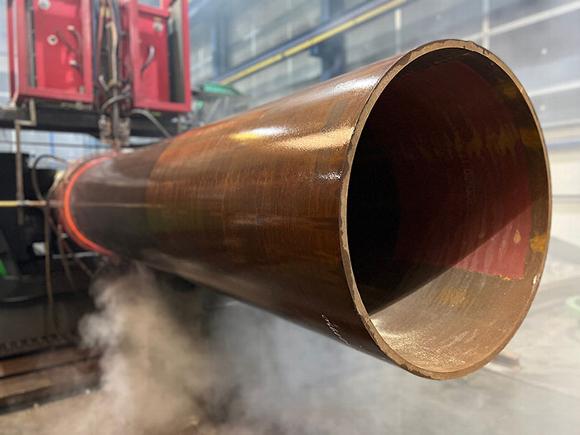Case Study - Feasibility Study
Feasibility Study for Saudi Hot Induction Pipe Bending
Induction pipe bends are widely used in petroleum, chemical, steel and power plants. Key markets for induction bends are offshore oil and gas production where induction formed bends, particularly those with high wall thicknesses of over 25 mm, are used for subsea and topside applications while in power plants induction bends are an intrinsic feature of many operations.
Induction bending is a controlled high precision bending of pipes and shapes under localised heating using high frequency induction electric power. It is a flexible and versatile method to solve or simplify many difficult situations for mechanical and construction contractors in oil, gas, petrochemical plants and architectural structures to substitute for elbows and fittings and to make new creative shapes.
Such an induction pipe bending plant would typically be able to operate on carbon steel pipes up to 64 inches (1,600 mm) diameter.
ASA Consulting conducted a programme of interviews throughout the Kingdom with the major oil and gas operating companies, EPC contractors, consultants, power and water distribution organisations and government organisations. In addition, an analysis of international trade statistics and general data search with industry specialist organisations was undertaken in the United Kingdom.
Following the market study, ASA Consulting proceeded with a full techno-economic and financial feasibility study to satisfy the requirements of the Saudi Industrial Development Fund (SIDF).
The techno-economic study for a state-of-the-art induction pipe bending facility included:
- Process and capacity
- Machinery and equipment
- Buildings and civil works
- Operating costs
- Location and site selection
- Organisation and manning
- Implementation schedule
A financial analysis was carried out that indicated a break-even point, rates of return and pay-back period for the project under base case assumptions.
Markets and services
Essentials
Get in touch
enquiries@asaconsulting-me.com
ASA Consulting Advisory Services
PO Box 5630
Warminster
Wiltshire
BA12 2DU
United Kingdom

